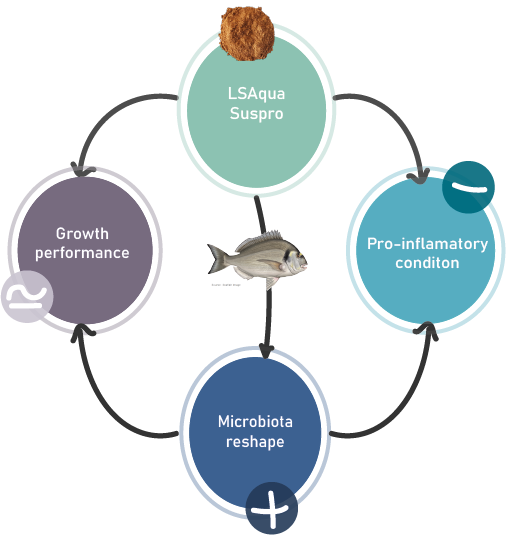
Our study suggest that the intestine of fish fed with FM-substitution diets contained a wider range of bacteria capable of enhancing a more diverse number of host functions. Despite this, the typical microbiota of marine fish with a high abundance (>90%) of Proteobacteria, Firmicutes, Actinobacteria, and Bacteroidetes phyla was found herein in all dietary groups. However, LSAqua diets had an impact on microbiota and changes in gut bacterial communities were already found at the phylum level, supporting the fact that intestinal microbiota is highly influenced by dietary nutrients.
Finally, and conversely to the results found in the histology; pathways -analysed from the inferred metagenome- related with pro-inflammatory signalling were under-regulated in fish fed LSAqua diets. On the other hand, pathways pertaining to quorum sensing or anti-microbial production which are related with microbiome communication and structure were over-regulated. This leads us to believe that perhaps exists a tendency towards an anti-inflammatory response. Thus, it seems that microbiome structure is shifting to deal with the alternative fish feed formulations and it is likely that proteins source is an important factor modulating intestinal microbial communities.
It can be hypothesized that the shift toward and anti-inflammatory microbial structure is a host-driven change of the bacterial populations in an attempt to balance the diet-induced inflammation, but more studies are required to unravel the real metabolic potential of these populations and the basis of this regulation.
Here you can find the complete article: https://issuu.com/aquafeed.com/docs/aquafeed_vol_13_issue_3_2021/38



